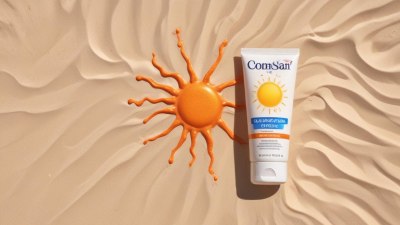Why You Only Remember Sunscreen After the First Burn
Understanding the importance of sunscreen and the memorable lesson learned after a first sunburn.

This image was created with the assistance of Freepik
The sun is a powerful force in our lives, providing warmth and light that are essential to our existence. However, this same sun can be a source of significant harm, especially to our skin. It’s a common experience for many individuals to only remember to apply sunscreen after they've suffered from their first sunburn. This article delves into the reasons behind this phenomenon, the impact of sunburn, and the importance of making sunscreen a vital part of your skincare routine.
The Nature of Sun Exposure
To understand why we forget sunscreen until after the first burn, it’s important to examine how we typically engage with sun exposure. When we are young, the immediate gratification of being in the sun overshadows the potential long-term effects. Children especially are caught up in play, completely oblivious to the risks of sun exposure. As they grow older, the transient nature of a tan might seem appealing, leading many to forego protective measures. This behavior persists into adulthood where the thrill of summer days often takes precedence over skin care.
The Science of Sunburn
Sunburn occurs when the skin is overexposed to ultraviolet (UV) radiation from the sun. The skin contains melanocytes, which produce melanin, the pigment that gives skin its color. When UV radiation penetrates the skin, it damages the DNA in these cells, leading to inflammation and the reddish coloration associated with sunburn. This biological response is our body’s clear signal that we’ve overdone it in the sun, and it serves to remind us of the potential damage that can occur if we remain unprotected.
Short-Term vs. Long-Term Impact
One reason individuals only tend to remember sunscreen after suffering a sunburn is the difference between short-term and long-term consequences. In the moment, the immediate joys of summer outings or sunbathing can overshadow the potential repercussions. Sadly, many individuals may not feel compelled to protect their skin until they experience the pain and discomfort associated with sunburn. Once they have that painful experience, it creates a lasting impression that often translates into a change in behavior towards sun protection.
The Role of Memory and Pain
Memory plays a crucial role in our behavior. Painful experiences tend to stick with us far longer than mundane ones. Scientific studies have shown that the brain is wired to remember negative experiences as a way to protect us from future harm. The sting of a sunburn, the peeling skin, and the discomfort amplify the learning process. Thus, when someone suffers from a sunburn, they are more likely to remember the importance of sunscreen in future sun exposure scenarios.
Common Myths About Sunscreen
Another reason why many neglect sunscreen is due to misconception. Common myths, such as the belief that sunscreen is unnecessary on cloudy days or that darker skin does not need protection, contribute to this negligence. This lack of understanding regarding the importance of consistent sunscreen use often leads to the regrettable lesson learned only after suffering a sunburn. Education on these misconceptions is essential so that individuals are more prepared to protect their skin adequately.
Changing Habits
Once someone experiences the discomfort and embarrassment of a sunburn, many become more vigilant about their sun protection. This adaptation is part of human behavior; people often learn from their experiences, and the sunburn serves as a notable example. Creating a routine that integrates sunscreen application into daily activities is crucial. Whether it’s before heading outdoors or incorporating it into your morning skincare regimen, consistent practices can significantly reduce the likelihood of repeated sunburns.
Frequency of Application
Another important aspect of sunscreen use is reapplication. Many individuals may apply sunscreen in the morning, but forget to reapply throughout the day. UV exposure can occur even during brief sunlit moments, such as walking to your car or socializing outside for a short time. This is why many people mistakenly believe they are protected when they are not, leading to additional sunburn experiences. Understanding the need for reapplication at intervals of at least every two hours, and after swimming or sweating, is vital to effective sun protection.
The Psychological Factors
There are psychological factors at play when it comes to sun protection behaviors. For some individuals, the act of applying sunscreen may feel tedious or disruptive to their routine. Others may feel invulnerable, believing that they won’t burn or be significantly harmed by UV exposure. These cognitive biases can lead to neglecting sunscreen until a painful reminder arrives in the form of sunburn. Awareness of one’s own tendencies and biases alongside the real threats posed by UV radiation is critical in combating this multifaceted issue.
Finding the Right Product
Choosing the right sunscreen can also impact one’s likelihood to use it consistently. Options on the market vary widely, from lotions to sprays, and despite the numerous choices, many individuals may still find it challenging to stick to one product. As a result, they may not develop the habit and consistency needed to protect their skin adequately until they find a product that suits their preferences. This trial-and-error process is an integral part of integrating sunscreen as a regular component of life.
Building a Culture of Protection
Furthermore, creating a culture that emphasizes sun safety and proper sun protection is vital. Whether at schools, workplaces, or in communities, promoting the benefits of sunscreen and educating individuals about the risks of not using it can significantly mitigate the incidence of sunburns. Initiatives that focus on sun safety, such as awareness campaigns or providing free sunscreen at public events, can help facilitate more consistent sunscreen use among various populations.
Long-Term Skin Health
Ultimately, the key to preventing sunburn rests on the commitment to prioritizing long-term skin health. The consequences of repeated sunburn can accumulate over time, leading to premature aging, increased risk of skin cancer, and irreversible skin damage. Cultivating awareness around consistent sunscreen use is essential in establishing habits that safeguard our skin from the harmful effects of UV radiation.
In conclusion, the painful lesson learned from a first sunburn often serves as a catalyst for individuals to begin incorporating sunscreen into their daily routines. Understanding the risks associated with sun exposure, the psychological factors influencing sunscreen use, and the importance of adopting protective habits can help foster a culture of skin safety. By acknowledging the lessons learned from sunburns, individuals can commit to a lifetime of protecting their skin, ensuring its health and resilience against the damaging effects of the sun.











